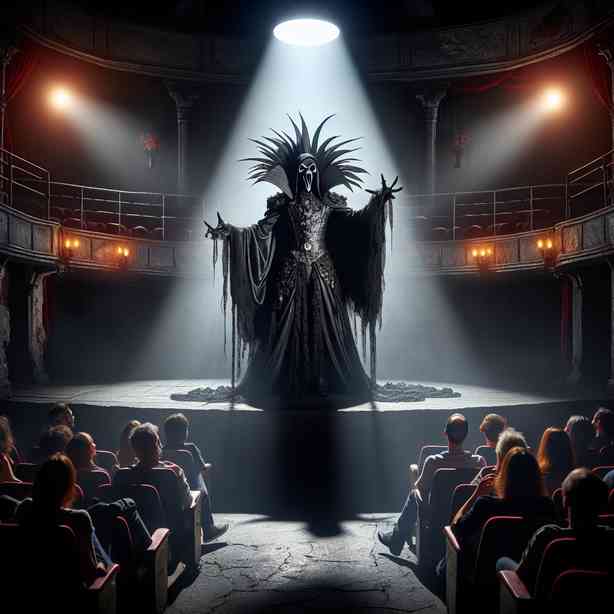
Villains have long captivated audiences in literature, film, and theater, often stealing the spotlight from the protagonists with their charisma, complexity, and memorable lines. The phenomenon of the villain having the best lines is not merely a byproduct of clever writing; it speaks to deeper psychological, thematic, and moral undercurrents that resonate with us. Characters like Loki from the Marvel Cinematic Universe or the Joker from Batman exemplify how villains can express truths that challenge our understanding of morality and humanity.
What makes a villain’s lines so impactful? One key reason lies in their unique perspective. Villains often represent a stark contrast to the hero’s ideals, providing an alternative worldview that can be both intriguing and unsettling. When a villain articulates their philosophy—whether it’s about power, control, or chaos—they invite the audience to ponder difficult questions. This duality enriches the narrative and engages viewers in a deeper dialogue about their values and beliefs.
For instance, consider the character of Hans Gruber in “Die Hard.” His eloquent threats and cool demeanor elevate the stakes of the story while simultaneously revealing his intelligence and calculations. Lines that might seem menacing also showcase a sense of charm that captivates the audience, making them question who, if anyone, is truly justified in their actions. The interplay of good versus evil becomes a dance of words where the villain often leads.
Another critical aspect is the emotional engagement of the audience. Villains often express feelings of anger, betrayal, or sadness that are relatable, even if their actions are not. While heroes may embody the ideal qualities we aspire to, villains reflect our fears and frustrations. When a villain delivers a particularly poignant line about their pain or loss, it resonates on a human level. This complexity ensures that their dialogues are memorable, allowing them to linger in our minds long after we’ve experienced the story.
Moreover, the use of wit and clever wordplay in villainous lines often enhances their appeal. A great example can be found in the character of Maleficent from Disney’s “Sleeping Beauty.” Her iconic curse, delivered with poise and menace, not only serves the plot but also establishes her as a formidable force. The way she manipulates language showcases her power and cunning, captivating the audience while illustrating the depth of her character.
The fascination with villain lines also lies in the notion of taboo. Villains often challenge the social norms and moral codes that govern society, granting them a certain freedom of expression that heroes cannot afford. Their lines, therefore, can delve into dark humor or profound cynicism, providing commentary on human nature and societal failure. This anti-establishment viewpoint can be liberating, allowing the audience to explore the depths of their psyche in a safe narrative space.
Let us also discuss the role of voice and delivery in making a villain’s lines stand out. The way a line is spoken—the tone, inflection, and pacing—can heavily influence its impact. A chilling whisper or a booming proclamation can make a world of difference in how we perceive the intent behind the words. Actors like Anthony Hopkins as Hannibal Lecter or Johnny Depp as Captain Jack Sparrow demonstrate this power remarkably well. Their ability to infuse lines with subtlety and nuance elevates even simple phrases to iconic status.
In many stories, the best villain lines serve a dual purpose. They advance the plot while simultaneously offering insight into the antagonist’s psyche. This multifaceted approach creates a richer narrative experience, allowing audiences to see beyond the surface of the villain’s actions. Consider how the Joker’s chaotic philosophy in “The Dark Knight” reveals underlying truths about society and morality, culminating in lines that are both chilling and thought-provoking. His declaration that “all it takes is one bad day to reduce the sanest man alive to lunacy” speaks volumes about the fragility of our moral compass, making audiences reflect on their own humanity.
As viewers and readers, we often find ourselves torn between rooting for the hero and being drawn to the villain’s charisma. This internal conflict is essential to storytelling, keeping us engaged and invested in the outcome. When a villain delivers a powerful line, it serves as a catalyst for this tension, prompting us to reconsider our definitions of good and evil. They force us to confront uncomfortable truths about ourselves and the world, creating a dynamic that is both entertaining and enlightening.
In today’s media landscape, the complexity of villainous characters is more pronounced than ever. Audiences crave authenticity and depth, which is often found in the best villain lines. This trend speaks to a broader cultural shift towards understanding and empathy. We are increasingly aware that every character—especially the villain—has a backstory that informs their behavior. The best lines humanize these characters, allowing audiences to grapple with the shades of gray that exist in morality.
It’s worth noting, however, that while powerful, villain lines should be used judiciously. Excessive pontificating can detract from the story’s momentum, leading to scenes that feel forced or overly dramatic. The best lines are well-timed, emerging at crucial moments that enhance the narrative rather than halt it. Balancing depth with pacing is an art, and successful villains exemplify this dual responsibility.
In conclusion, the phenomenon of the villain having the best lines is a rich and complex aspect of storytelling. Their words encapsulate a myriad of emotions, philosophies, and societal critiques that resonate deeply with audiences. As we engage with these characters, we find ourselves wrestling with our perceptions of morality and humanity, often leaving us with more questions than answers. Whether through clever wordplay, emotional resonance, or unsettling truths, the best villain lines remain etched in our memories, enhancing our appreciation for the art of storytelling itself. This fascination reminds us of the enduring power of narratives to explore the darkest corners of our existence, allowing us to engage with and learn from them, even as we cheer for the heroes who oppose them.


